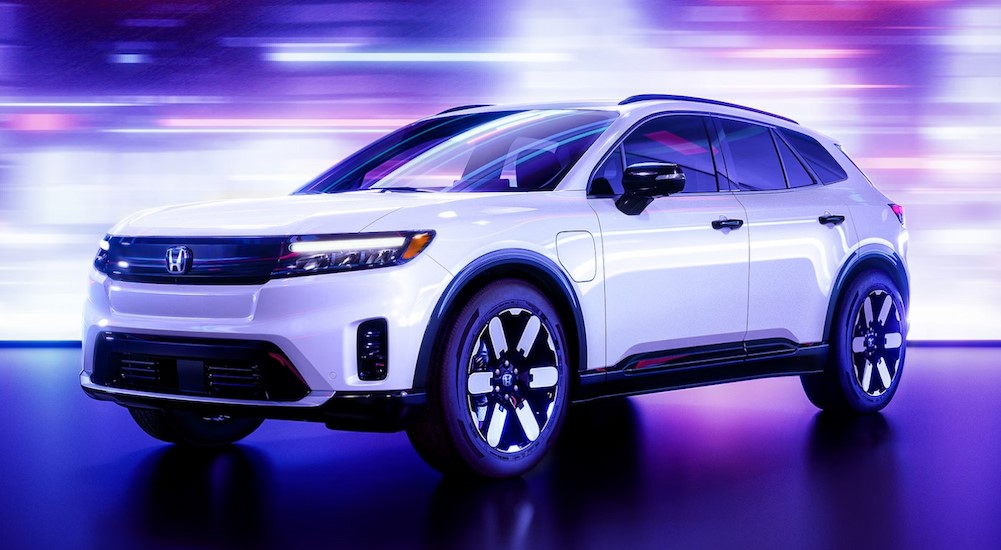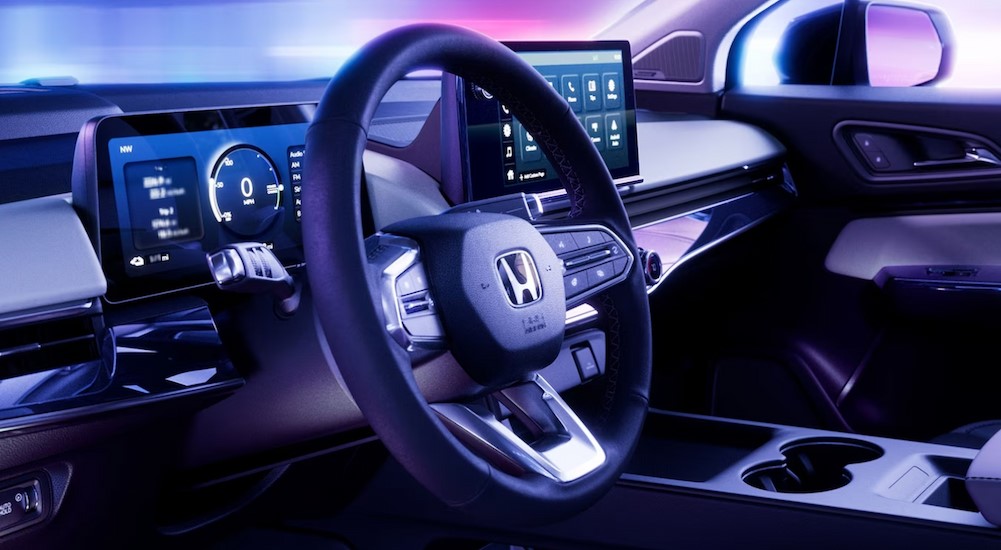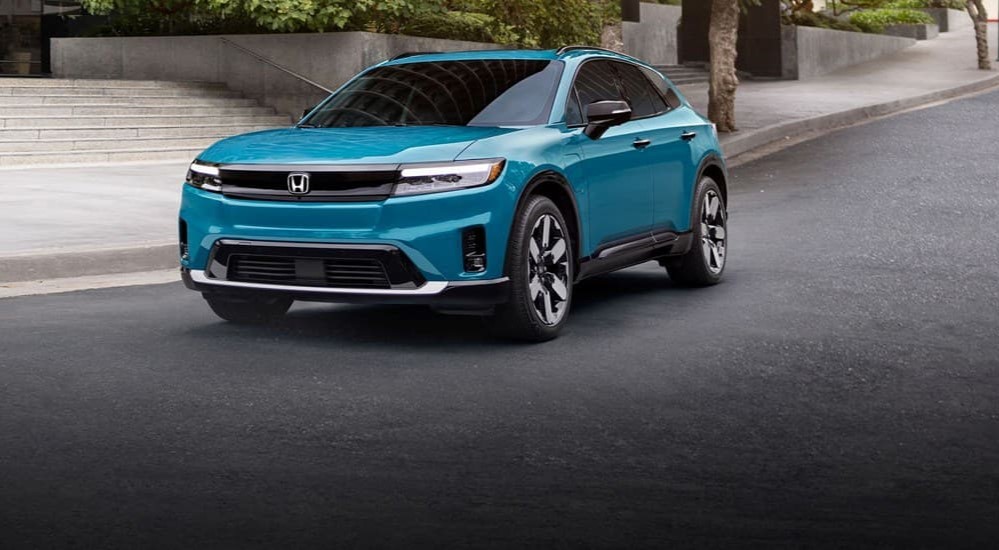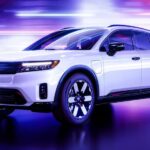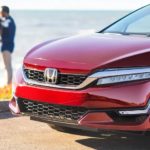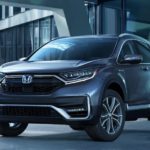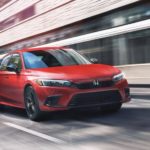A prologue is defined as a short introduction that gives background information and sets the stage for the story to come. As the Honda brand’s first mass-market EV, the 2024 Prologue hopes to do just that. Built in collaboration with GM and leveraging the American company’s Ultium electric architecture, the Prologue is a midsize crossover EV that could set the tone for Honda’s ambitious EV itinerary.
That said, the first Honda Prologue for sale represents both the beginning and the end of an era. Honda and GM have already terminated their partnership with just one model to show for their 18 months of collaboration. Still, the new SUV also allows Honda to gain some much-needed ground in the EV segment, where it has fallen behind many of its rivals due to an outsized—if fortuitous—focus on hybrid models.
With a recently announced $65 billion investment in EV development, an ambitious itinerary that will see the release of seven new all-electric models by 2030, and a new partnership with Nissan and Mitsubishi that could not only help the company make up for some lost time but rocket ahead of the competition in the EV segment, this is an electrifying time over at Honda. Let’s see how Honda got here, take a closer look at its EV game plan, and learn why drivers should consider the Prologue as we ponder Honda’s EV future.
One Partnership Ends, Another Begins
While the Prologue was supposed to be the first collaboration to come out of a long and productive relationship between Honda and GM, it’s now looking like a child of divorce. Things started well enough back in 2022, with the two automakers launching a joint effort to build a new line of affordable EVs—and the honeymoon period lasted a short 18 months. “After extensive studies and analysis, we have come to a mutual decision to discontinue the program,” said GM spokesperson Darryll Harrison in late 2023. “Each company remains committed to affordability in the EV market.”
Both sides cited the relatively low profit margins and lack of demand for new EV models as a major part of the decision. The segment has always faced challenges, from sparse charging infrastructure and EV cost to range anxiety; however, it’s the industry-wide slowdown in EV sales and the increased popularity of hybrid models that really did the EV program in. Profit margins on all-electric vehicles have always been low (Ford recently announced that it lost $132,000 for each of the 10,000 all-electric models it sold in the first three months of 2024), making a program dedicated to affordable EVs pretty hard to justify to shareholders. “[It] would be difficult as a business,” said Honda CEO Toshihiro Mibe in April.
Honda and GM will continue to produce the Prologue and partner on hydrogen fuel cells and autonomous vehicles, but the joint quest to produce an affordable EV has clearly come to an end. Honda didn’t waste any time in finding a new beau, announcing a partnership with Nissan and Mitsubishi in August. All three Japanese brands are somewhat behind the curve in terms of EV development, especially when compared to their Chinese rivals. That doesn’t sit right with the Japanese government, which aims to increase its presence in the “software-defined” vehicle market to 30% by 2030.
The new Honda/Nissan/Mitsubishi partnership could do just that, allowing the three brands to join forces in an effort to develop everything from new EV batteries and charging services to components and software. The last element is of particular importance, especially as the industry moves to smarter, more tech-driven vehicles. The new in-vehicle software could allow Honda, Nissan, and Mitsubishi to become a force to be reckoned with in automated driving, artificial intelligence, and advanced connectivity—and it could happen sooner than you might think. The group has set an ambitious goal of producing new models within the next year, allowing the brands to play catch-up in the EV segment and giving Japan an important leg up in the emerging market.
A Promising Prologue
Given the fact that the 2024 Prologue was a result of the short-lived partnership with GM, it doesn’t serve as a perfect crystal ball to help predict where Honda is headed with its future EV models. To be fair, it’s an intriguing vehicle in its own right, merging Honda’s savvy sense of design with GM’s next-gen Ultium electric architecture, making it an immediate contender in the competitive EV segment. Slotting between the compact CR-V and the full-size Pilot, the Prologue is an all-electric alternative to the brand’s midsize Passport crossover.
The Prologue is offered with the choice of two powertrains: a single-motor setup with front-wheel drive that gives drivers 212 hp to play with or a dual-motor AWD design that ups the ante with 288 hp. The latter is good for a zero-to-sixty time of 5.9 seconds that, while respectable, can’t compete with some of the midsize EV offerings from Kia, Hyundai, and the like. As with many EVs, the Prologue comes with adjustable regenerative braking that not only improves the crossover’s range but also brings a novel one-pedal driving feature into the mix.
This EV boasts a range of 296 miles in its FWD guise, though the AWD version does subtract as much as 20 miles from the equation. Anything in the 300-mile range is respectable in today’s EV market, and those who are plagued by range anxiety will be happy to hear that the Prologue can top off its battery at a maximum rate of 155 kWh when connected to a DC Fast Charger.
While the Prologue might wear the Honda badge, GM’s influence is not hard to spot. From the cabin’s control interfaces to the 85-kWh battery it shares with the Chevy Blazer EV, the Prologue might seem a little uncanny to those who are expecting a garden-variety Honda. That’s not to say Honda hasn’t put its own stamp on the Prologue; this EV features a clean, modern design and includes a few goodies like Apple CarPlay and Android Auto that can’t be found in the Blazer EV.
The centerpiece of the Prologue’s tech-forward cabin is the 11.3-inch infotainment touchscreen, which, when paired with an 11.0-inch digital gauge display, wireless smartphone charging pad, and available head-up display, gives the Prologue a futuristic feel. Honda has even included an eight-year, 100,000-mile warranty on the Prologue’s electric components, marketing an important addition to the brand’s typical coverage that should give those new to the EV world some valuable peace of mind.
What’s Next?
If you’re trying to forecast Honda’s EV game plan, just follow the money. Earlier this year Honda announced that it will transition 100% of its lineup to EV fuel cell (FCEV) models by 2040 and invest more than $65 billion in its push towards electrification by 2030. A good portion of this investment will go toward developing a more efficient, sustainable, and affordable EV battery.
As the single most expensive component in any all-electric vehicle, an EV’s battery can account for up to 50% of a vehicle’s total cost. Honda will look to new tech and leverage its newfound partnership with Nissan and Hyundai to develop an EV battery that the brand hopes will be 20% cheaper than existing products. If they manage to crack the code, Honda says overall production costs could be reduced by as much as 35% and allow the automaker to achieve a 5% profit margin on its EVs by 2030.
In the meantime, hybrids will still play a vital role in Honda’s sales strategy. The Japanese company aims to transition 40% of its sales to EVs and FCEVs over the next five years, but the remaining 60% will be driven by hybrid models. Honda has already hybridized much of its lineup, which has been a helpful financial buffer as the segment continues to perform well when compared to all-electric models. Hybrid vehicle sales are currently outshining EVs in the US market, rising 65% in 2023 as compared to 46% for EVs. Hybrids now make up 9.1% of vehicles on the road, versus EVs at 6.9%.
While Honda might be taking a more measured EV approach than some of its rivals, there’s good reason to believe the brand’s EV evangelism isn’t just a bunch of hot air. Honda has already previewed a few of its all-electric 0 Series models, including the Space-Hub concept and the Saloon, the latter of which will probably be the newest homegrown Honda EV to hit the streets when it debuts in 2026. The Saloon will be followed by an as-yet-unnamed midsize SUV and “entry-level” SUV in 2026, a three-row full-size SUV in 2027, a compact SUV in 2028, “small-size” SUV in 2029, and finally, a compact sedan in 2030.
Slated to be built on Honda’s new in-house EV architecture, these models will leverage an electronic axle (e-Axle) and an ultra-thin battery pack that should allow the forthcoming EVs to maximize cargo and passenger space. These lighter components should help the upcoming EVs shed over 200 lbs when compared to previous all-electric offerings, which will be a boon to both performance and efficiency.
Honda’s Electric Endeavor
The current slump in EV sales doesn’t really present an existential threat to Honda’s business. Honda is one of the most diversified brands in the market, offering a wide range of cars, trucks, and SUVs, along with motorcycles, generators, marine engines, garden equipment, and more. The failed partnership with GM set the company back in terms of its EV journey, but it also produced a promising sign of things to come in the Prologue all-electric crossover.
Honda’s new alliance with Nissan and Mitsubishi looks promising, allowing these three Japanese brands to defray research and development expenses and leverage one another’s expertise to bring their country’s EV industry into the modern era. Any company’s announcements and press releases always need to be taken with a grain of salt, but Honda certainly seems earnest in its commitment to transition to a 100% EV- and FCEV-based lineup by 2040, investing some $65 billion and providing a solid roadmap of all-electric models to come.
